Faculty Lecturers 1979-1989
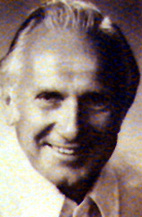
A native of Santa Barbara, Robert Casier was graduated from Santa Barbara High School as the outstanding male student of his class in 1944. He holds bachelor's and doctoral degrees from the University of California at Santa Barbara, and a master's degree from San Francisco State University. His doctoral dissertation, "The Senate Filibuster," won the annual award as the best work of scholarship by the Western Political Science Association.
Dr. Casier taught briefly at Santa Barbara High School before coming to Santa Barbara City College in 1955. In addition to teaching at City College he lectured in political science at UCSB, 1959-74. At City College, he served as President of the Instructors Association, member of the Academic Senate's Representative Council, Dean of Instruction, as well as Chairman of the Social Science Division and Political Science Department.
Extensive travel abroad has given Professor Casier an opportunity to observe, first hand, numerous foreign political institutions and international organizations. He has lived in Western Europe and traveled in Eastern Europe, the Soviet Union, the Middle East, North Africa and Mexico.
Sports have been an abiding interest of Bob Casier since his youth. Earlier in his career he served as Director of Youth Leagues for the Santa Barbara Recreation Department and was a high school basketball coach. As an undergraduate, he minored in physical education and played on the UCSB intercollegiate basketball and volleyball teams. More recently, he has become an avid tennis player and fan.
The speaker married Shirlie Lerner in 1949 and they have three sons-Craig, Rodger and Bryan. Mrs. Casier is a reading teacher at Monte Vista Elementary School.
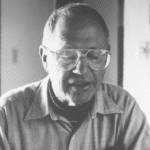
A NATIVE of New Jersey, Henry H. Bagish was graduated from Clifford J. Scott High School, East Orange, N.J., with High Honors, in 1942. He attended Rutgers University, then enlisted in the U.S. Army and served in the Philippines in World War II. After the war, he came to California to continue his education, earning his bachelor's degree at UCSB in 1948 and his master's degree and teaching credential at UCLA in 1949.
MR. BAGISH began his teaching career at Glendale College in 1949, then came to Santa Barbara Junior (now City) College in 1951. In those early years, when the college was very small, he taught history, economics, English, psychology and philosophy, in addition to his primary fields of sociology and anthropology. He also taught courses at UCSB and Westmont College.
AT SANTA BARBARA City College, in addition to teaching, Mr. Bagish served as adviser for student activities and student government. An ardent advocate of a strong faculty voice in the formulation of college policies, he participated in the creation of the Instructors Association and, later, the Academic Senate. He served as the first president of the Instructors Association and the second president of the Academic Senate. He has also served as chairman of the Social Science Division, the Sociology/ Anthropology Department, and has been a member of most college and Academic Senate committees. He has been involved in the creation of many college policies, such as the institution's sabbatical leave policy.
ON THE STATE and regional levels, Mr. Bagish served on a liaison committee linking community colleges and the University of California. He has participated as a member of many accreditation teams for colleges in California and Hawaii. On the national level, he delivered a paper on decision-making in community college education to a national conference of the American Association for Higher Education, and was later appointed by that organization to its Task Force on Faculty Representation and Academic Negotiations, which conducted a nationwide study-publishing the results under the title, "Faculty Participation in Academic Governance." He also served on an advisory committee for the College Entrance Examination Board in establishing the College Level Examination Program, designed to provide a national system of college credit by examination.
THE SPEAKER married Frances Hombach, a native Santa Barbaran, in 1952, and they had three children, Frank, Alan and Mrs. Stephanie Hebert. The family has traveled extensively throughout North, Central and South America, Europe, Africa, Asia, the Middle East and Oceania as a result of Mr. Bagish's ongoing anthropological research-the goal of which is to enrich and broaden his students' learning experiences at Santa Barbara City College.
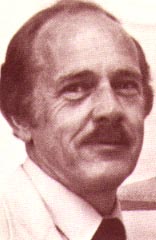
A NATIVE of New Jersey, Charles R. Courtney was graduated from Tucson High School and from Westmont College. He holds a Master's degree and the Doctor of Philosophy degree in English from the University of Arizona, Tucson. His doctoral dissertation was entitled The Pearl Poet: An Annotated International Bibliography, 1955-1970.
BEFORE COMING TO Santa Barbara City College in 1957, Dr. Courtney taught English and French at Westmont College for three years and at Santa Barbara Junior High School for five years. At Santa Barbara City College, he has served as President of the Instructors' Association, and, for seven years, as Chairman of the English Division. He has also been advisor to the Santa Barbara City College Chapter of Alpha Gamma Sigma, a student honorary society.
PROFESSOR COURTNEY has been associated with The Experiment in International Living since 1960, having been a leader of student groups to Switzerland, France, Italy, Japan, and India. In 1961-62, he was the recipient of a Fulbright grant for an exchange teaching position in Newry, County Down, Northern Ireland.
THE SPEAKER is married to the former Eleanor Lewer. Dr. Eleanor L. Courtney is Professor of Literature at Westmont College. The Courtneys have fve children-Mrs. Roxane Brown, Mrs. Odette Green, Mrs. Rosine Hart, Breton, and Gavin.
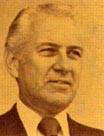
Dr. Harold M. Dunn was born in Sacramento, California, and was raised in the San Francisco Bay area. He began his study of the violin at the age of eight. During his high school and college years, he had a highly successful record in track.
He received his Bachelor of Arts and Master of Arts degrees from Occidental College. The history of jazz was his M.A. thesis topic. In 1974, he was awarded the Doctor of Musical Arts Degree by the University of Oregon in viola performance and music history. His dissertation topic was concerned with the study of an aesthetic approach to medieval music.
His first teaching experiences were conducting high school bands in Brea, Torrance and Monrovia. He later taught choral music and conducted the orchestra at San Mateo High School for ten years, as well as coached football and track.
In 1963, he came to Santa Barbara City College to teach band, orchestra, choir and classes in music appreciation and musicianship. In recent years, Dr. Dunn has taught classes in music history and literature, jazz history, appreciation and manuscript, and conducted the Camerata Choir of 140 voices. He also teaches the art of calligraphy in the college's Continuing Education Program.
In 1975, Dr. Dunn was invited to bring his 225?voice SBCC Choir to sing at the Western States Music Educators Convention in San Francisco. His choral groups have performed, with the Santa Barbara Symphony, Handel's Messiah, Verdi's Requiem and Beethoven's Ninth Symphony. His students have sung major choral works of such composers as Mozart, Brahms, Honegger, Orff and Puccini. Last spring, the Camerata Choir gave the complete performance of the great B Minor Mass of Bach.
The Associated Students of SBCC selected him for the Top Professor Award in 1965.
He served as chairman of the Music Department from 1963 to 1976. Also, as chairman of the Fine Arts Division for 10 years, Dr. Dunn was actively involved in the planning of the new Drama? Music Complex and James R. Garvin Memorial Theatre. He was particularly concerned that the beauty of the natural setting of the building be incorporated into the architect's plans.
His faculty responsibilities have included membership on the Representative Council of the Academic Senate, chairmanship of the Committee on Instructional Reorganization, and his current membership on the Committee for General Education Requirements.
Serving music education more broadly, Dr. Dunn served on the Board of the Southern California Music Educators Conference. In 1964, he organized a state convention on the SBCC campus for all California music educators.
Dr. Dunn is a member of the Santa Barbara Musicians Union, and was a member of the Santa Barbara Symphony for many years.
The speaker is married to the former Phyllis Magnuson, who had an outstanding career as a music educator in Berkeley, California.
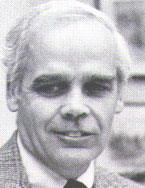
John Kay A NATIVE OF Peace Dale, Rhode Island, John Kay was raised and educated in Santa Barbara since the age of eight. An honor graduate from Santa Barbara High School in 1953, he holds bachelor's, master's and doctoral degrees from the University of California at Santa Barbara. His doctoral dissertation explored bureaucratic influence patterns in the state politics of education.
Dr. Kay taught briefly at Garden Grove High School and San Marcos High School before coming to Santa Barbara City College as a member of the "Class of 1965." In addition to teaching at Santa Barbara City College, he has been a periodic lecturer at UCSB in political science, 1966?84. His college teaching has ranged from Asian politics and Western civilization to American politics and history-and currently focuses on public policy analysis, American politics, and law and society.
IN ADDITION TO his teaching duties, Professor Kay is currently chairman of the SBCC Social Science/Library/ Ethnic Studies/Foreign Languages Division and a member of the College Planning Council, Division Council and Curriculum Committee. He is a past president of the Faculty Senate and of the Instructors'Association and has served on numerous other campus committees. He has also been a delegate to various statewide community college organizations. In 1983, he was the recipient of a Fulbright scholarship to study and travel throughout the Republic of India.
The speaker is currently on the board of the United Nations Association of Santa Barbara and board member of the Democratic League. He is past president and current board member of the Santa Barbara Teachers Federal Credit Union and of the Santa Barbara County Schools Personnel Commission. For the past six summers, he has served as Deputy Director, Department of Area Studies, in the School of International Studies at Kennedy Center, Fort Bragg, North Carolina.
JOHN KAY is married to the former Edith Jacobson. They have two children, Helen and Mary, and live in the Foothill area of Santa Barbara.
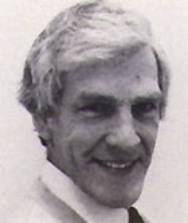
RAYMOND F. O'CONNOR joined the faculty of Santa Barbara City College in 1965, and is a member of the Chemistry Department staff. Prior to that he taught biology and microbiology at Orange Coast College in Costa Mesa, and chemistry and mathematics at the Thacher School in Ojai. His teaching career was preceded by research appointments at Merck, Sharp and Dohme, the Massachusetts Institute of Technology, and the University of California at Berkeley.
He graduated from Miami University, Oxford, Ohio, with a B.A. degree in microbiology, served three years as an officer in the U.S. Navy, and then obtained an M.S. degree in bacteriology from the University of Michigan at Ann Arbor.
THE PROFESSOR is the author of a chemistry text for the health sciences, as well as chemistry and biology laboratory manuals. He is a member of the MIT chapter of the Society of Sigma Xi, an organization whose members are selected for excellence in research.
While at SBCC, he has served as president of the Academic Senate, and chairman of the Chemistry Department and of the former Division of Physical Science and Engineering. He has served several terms as a member of the Representative Council of the Academic Senate, and as a member of the board of the Instructors' Association. In addition, he has served on various other college and Academic Senate committees.
HIS LEISURE interests include renovating old houses, traveling, and live theater productions.
Acknowledgments
THE LECTURER is grateful for the invaluable assistance provided by SBCC librarians Virginia Rowley and M'Liss Garza, and for the encouragement and suggestions of his colleagues.
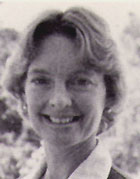
BARBARA LINDEMANN joined the History Department at Santa Barbara City College in 1972 as a part-time instructor and became a full-time member of the staff in 1974.
A graduate of Friends School in Baltimore, Maryland, she earned a B A. degree from Wellesley College, an M.A.T. from Harvard University, and a Ph.D. from the University of California, Santa Barbara. While writing her dissertation on the uses and abuses of Montesquieu's writings by the framers of the U.S. Constitution, she became interested in the subject of the history of American women. Since this was not yet a recognized discipline within history, she worked with other graduate students to prepare and teach a course in U.S. Women's History at UCSB. She then introduced a similar course at Santa Barbara City College and has taught it every semester since. She also teaches courses in American Civilization and U.S. History, Santa Barbara History, an interdisciplinary course in Women's Studies, and an interdisciplinary social science course for the Honors Program.
IN 1970 SHE was a founding member and later president of the Santa Barbara chapter of the National Organization for Women and a.member for two years of the newly formed Santa Barbara County Commission on the Status of Women. A full-time teaching position at Santa Barbara City College and the birth of her two children interrupted community volunteer work.
Her publications include a study of rape trials in eighteenth century Massachusetts and articles on historical methodology and changing sex roles.
AT SANTA BARBARA City College she has served as president of the Instructors' Association and president of the Academic Senate. She is currently the chairperson of the History Department and faculty adviser for the History Club. She established and edited for two years the staff newsletter, The Faculty Voice. In addition, she has served on numerous college and Academic Senate committees.
For relaxation she enjoys running, bicycling cooking, traveling and reading.
Acknowledgements
THE LECTURER thanks Prof. Morton Borden, her professor and mentor at the University of California, for excellent training, support and encouragement. She is grateful to the many colleagues and students who have stimulated her thinking over the years and taught her a great deal about teaching.
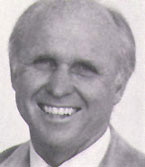
BORN IN THE MENNONITE farming community of Corn, Oklahoma, Elwood Schapansky relocated at the age of nine to the Central Valley of California, near Fresno, where he attended school and participated in development of the family orange orchard. He graduated from Orosi Union High School in 1956, as salutatorian of his class and as a recipient of the Bank of America and the Wishon Scholarships, which allowed him to continue his education at Fresno State University. After graduation, he worked for the Lockheed Aircraft Corporation, and then went on to the University of California at Santa Barbara where he attained a Master's Degree in Physics-and discovered Santa Barbara City College.
Dr. Schapansky worked at the Hoffman Science Center, as well as taught at SBCC, after completing studies at UCSB. The lure and fulfillment of teaching ultimately led him to full-time teaching at SBCC in 1963, where he has remained. In 1968, he was the recipient of the coveted Science Faculty Fellowship, presented by the National Science Foundation. He used this fellowship to study at Colorado State University and received his Ph.D. in Physics in 1971. He subsequently returned to SBCC to continue his teaching duties. He has also taught at the University of California at Santa Barbara.
THE LECTURER has an avocation/vocation which leads him to Alaska during the summer to fly commercially on the Aleutian Peninsula. He is the holder of an Airline Transport Rating and is a certified flight and ground instructor. These skills were used in 1964 to introduce the Aeronautics Program into the curriculum at SBCC. In addition to his teaching duties, Professor Schapansky has served as treasurer of the SBCC Instructors Association and President of the Academic Senate. He served four terms on the Representative Council and was Chairman of the Physics/Engineering/Aeronautics Department for eight years. As a result of studies completed while on sabbatical leave in 1980, Dr. Schapansky led the effort to initiate computer-assisted instruction at Santa Barbara City College. He continues to serve on faculty and college committees regularly.
Dr. Schapansky is married and has two children. His daughter, Karen Lynn, is a student at UC Davis, and son, Steve, attends Dos Pueblos High School, where the lecturer's wife, Karen, is a teacher of Mathematics.
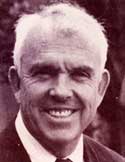
GEORGE EDWARD FRAKES grew up in Beverly Hills, where he received his early schooling. He matriculated at Stanford University, where he received his A.B. and A.M. degrees, with an interruption for service in the United States Air Force during the Korean and Cold War era. The lecturer received his Ph.D. from the University of California, Santa Barbara. His teaching career began as an evening civics teacher at Sequoia High School in Redwood City in 1958. Later, he worked as a high school history teacher, coach and counselor with the Santa Barbara City Schools and Punahou Academy, Honolulu, Hawaii. He has taught at Stanford University, the University of Southern California, University of California Extension and UCSB as a teaching assistant, lecturer and supervisor of student teachers.
Dr. Frakes joined the faculty of Santa Barbara City College in 1962 and is presently a professor and chair of the History and Geography Department. He has held several faculty leadership positions, including member of the SBCC Resource Allocation Review Board, chair of the Social Science Division, faculty representative to the California Community College Association, and president of the SBCC Instructors Association and CTA Chapter.
OFF-CAMPUS LEADERSHIP positions include member-ship in the American Historical Association Committee on Instruction, three WASC college accreditation teams, Santa Barbara City Charter Revision Committee, Santa Barbara County Democratic League Board, and as a fund-raiser for a number of charitable organizations. Dr. Frakes frequently serves as a master of ceremonies and moderator for community functions.
The lecturer's research interests are in the field of American colonial history. He is the author of Laboratory for Liberty, The South Carolina Legislative Committee System, 1719-1776, two articles and two instructors' manuals. He co-authored, with W. Royce Adams, a two-volume American history text, and an article, with Robert M. Frakes. He co-edited two anthologies on recent history with Dr. Curtis B. Solberg.
GEORGE E. FRAKES MARRIED Catherine R. Davies in 1954. She is a home and hospital teacher for the Santa Barbara City Schools. He is also a retired Air Force Reserve officer. George and Kay Frakes have lived in Santa Barbara since 1958. They have three children: James, a financial executive; Laura, a librarian; and Robert, a teacher and doctoral student.
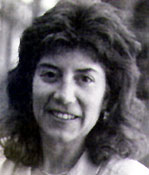
ELIZABETH HODES has always been equally attracted by science and humanities. Her father was a professor of physics and electrical engineering, and introduced her as a child to the delights of science. She played hide and seek in the concrete baffles surrounding cyclotrons, peered at small pond flagellae under the microscope, helped launch cosmic ray research balloons, and stomped grapes to make wine in lab carboys. Her mother was an outstanding English teacher, who made the literature of every period come alive and encouraged her interest in theatre, art and history.
She was born in Brooklyn, New York, but grew up primarily in the Midwest. As a high school student, she won awards both in English and in mathematics. She earned a B.S. from Stanford University, where she studied physics and mathematics, and went on to UCLA, where she received an M.A. in mathematics. In 1968, she joined the Peace Corps and was sent to Nigeria, West Africa. Her assignment to teach mathematics there was her first teaching "job." She joined the faculty of Santa Barbara City College in 1971, and began her career as a mathematics instructor. In her 17 years at SBCC, she has taught a full range of mathematics courses.
In 1979, her interest in the humanities resurfaced. She returned to school, completing an M.A. and then a Ph.D. in history at UCSB, specializing in the history of science. Her research interest is the social relations of science, and she has coauthored two articles in this area. Her studies led her to develop several lower division courses on science and society. In 1983, she received a Chancellor's Grant to offer a course in "Ethical Dilemmas and the Scientist" at SBCC. From 1982 to 1986, she served on the Caltech local advisory board associated with the PBS telecourse, The Mechanical Universe. She maintains an interest in finding ways to develop in students an awareness of science as an important part of Western culture.
HER SERVICE to the college has not been limited to instruction, though. She has served terms as Chair of the Mathematics Department and as Chair for the Mathematics/Computer Science Division. She just completed a term as one of three faculty representatives on the College Planning Council and also served as Vice President of the Division Chair Council. She has additionally served on the Representative Council of the Academic Senate, the Executive Board of the Instructors' Association, and many other college committees.
She likes to relax by jogging, swimming, or reading, and she enjoys folk dancing, theatre and travel.